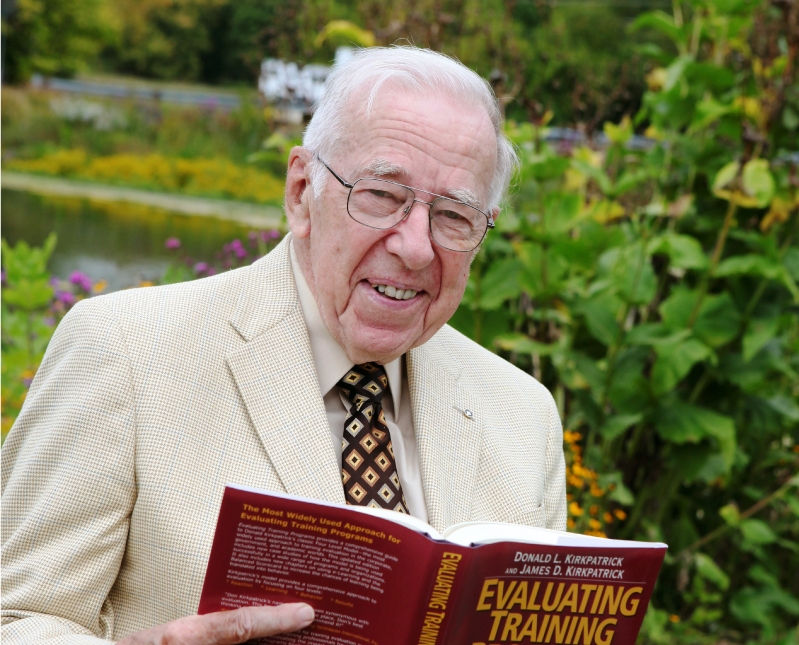Learn Don Kirkpatrick’s Answers to 2 Questions Still Asked About the Four Levels
The Kirkpatricks receive many questions about training evaluation, and how to use the Kirkpatrick Model for maximum organizational benefit.
Often, concerns distill down to two distinct yet common questions. Both are particularly crucial when resources are limited.
Don Kirkpatrick provided timeless answers to these queries below or click here for a downloadable PDF (best viewed on a PC versus a mobile device).
Q. How do you suggest a training team decide which programs to evaluate to Levels 3 and 4, knowing that they don’t have the resources to do all of them?
First of all, you need to get managers on board because you can’t do it alone, and you have no authority over the learners when they go back to their job.
The best way to do it is to give them a feeling of “ownership” in the program. Ask for their input in the curriculum of programs that their direct reports will attend. Also, you may even have them teach part of the program or at least introduce it.
Suggest to the managers that they do the following before sending their direct reports to a program:
- Go over the program with them and emphasize the importance of learning what they can.
- Tell them that when they return to the job, you will ask them: ”What did you learn and how can we apply it in our department?”
- Support them and hold them accountable for their change in behavior that you have agreed on.
If you do these things, they will be motivated to learn what they can and pick out the practical suggestions to bring back to their manager.
In selecting the specific programs to evaluate at Levels 3 and 4, consider the practical ideas that the learners can take back to their jobs. For example, ideal programs to evaluate at Level 3 and 4 are programs on Coaching and Leadership, which are two of the more popular courses and are encouraged and sometimes demanded by upper management.
Q. Our organization spends a lot of our resources hiring vendors to develop valid and reliable pre and posttests. We seem to have little money to get beyond that. What do you suggest?
First of all, pre and posttests are primarily designed to measure changes in knowledge and attitudes. We need to spend time in Level 2 measuring increase in skills, which can result in positive changes in behavior and results.
Therefore, if you are teaching new skills or modifying old ones, these are necessary to evaluate. 2 And you can do it in the classroom or on the computer without spending money. For example, if you are teaching coaching skills, build into the curriculum the following:
- Have an up-front role-play demonstration of proper coaching. Then spell out the techniques and principles that were involved.
- Then, divide the big group into threes and give them a subject for coaching, how to resolve a conflict between two direct reports, for example. Then have each person take the three different roles of coach, coachee, and observer.
- Then get reports from each group on how successful the practice sessions were. If not successful, why not? And continue with your teaching.
Another approach is to set up focus groups of selected learners that meet sometime after the program. Prepare questions that will help you decide how effective the training has been and what changes are needed in future programs. This is especially effective if the program will be repeated.
Additional Resources:
Kirkpatrick Four Levels® Evaluation Certification – Bronze Level
Kirkpatrick Then and Now
Evaluating Human Relations Programs for Industrial Foremen and Supervisors
Celebrating Don Kirkpatrick’s Legacy
Evaluating Training Programs: The Kirkpatrick Four Levels DVD
Don Kirkpatrick Commemorative Package
